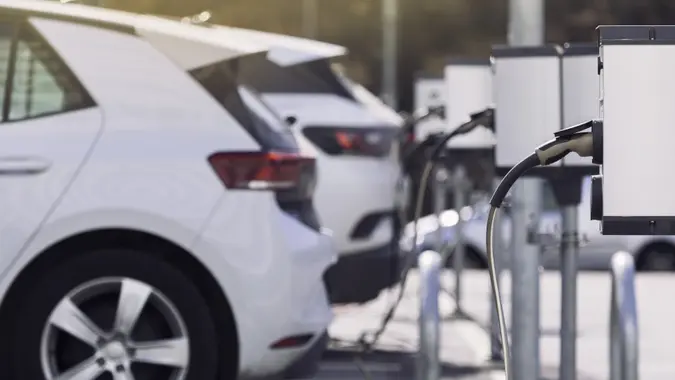Here’s Why Retirees Shouldn’t Always Pay for Renovations With Cash

Commitment to Our Readers
GOBankingRates' editorial team is committed to bringing you unbiased reviews and information. We use data-driven methodologies to evaluate financial products and services - our reviews and ratings are not influenced by advertisers. You can read more about our editorial guidelines and our products and services review methodology.

20 Years
Helping You Live Richer

Reviewed
by Experts

Trusted by
Millions of Readers
Many retirees dream of updating their homes. It could be a new kitchen, an updated master bathroom or energy-efficient windows. Instinct has us wanting to pay cash and avoid debt.
But here’s the problem. Tying up too much money in a renovation can leave you short on liquidity for emergencies, healthcare costs or everyday expenses. That cash could be working harder for you elsewhere.
The good news? There are smarter ways to fund renovations without tapping into your retirement savings.
Keep reading as GOBankingRates explore why paying cash isn’t always the best move, and the alternatives that can protect you from becoming strapped for cash.
Renovations Rarely Land Exactly on Budget
Home projects go over budget all the time. You remove a wall, and that reveals old wiring. The city asks for a code upgrade. The cost of materials spikes mid-project. A $40,000 renovation can turn into $50,000 without any extravagant extras. If you drain cash to the studs, you have less room for the surprise at the end, which is usually when the biggest checks are due.
Cash Can Leave You Exposed
When life throws a curve, a cash shortfall ties your hands. Retirees face expenses that don’t wait: A dental implant, a mobility aid, in-home care after a fall and last-minute plane tickets to help family. If the renovation money is already in tile and cabinetry, you may end up selling investments at a bad time just to cover an emergency. That’s how people lock in market losses.
Taxes Can Jump When You Pull Big Sums
Liquidating a taxable account or taking a large IRA distribution to fund a project can push your income higher for the year. That can trigger capital gains, bump you into a higher bracket and for some people, even raise Medicare premiums. All to pay a contractor faster than you need to.
Keep Cash and Still Build with a HELOC
There is a middle path. A home equity line of credit works well for phased projects and unknowns. You only draw what you use. During the draw period, many banks allow interest-only payments, which smooths cash flow while you plan a payoff. Rates are usually lower than credit cards. The tradeoff is that rates can move, so set a repayment plan that fits your retirement income.
Use Promotional Financing Carefully
You can also use promotional financing to cover a portion of the costs. Many reputable contractors offer short introductory rates, and some credit cards offer zero percent interest for several months. Use these only for amounts you are sure you can pay off before the promotion period ends, since the regular rate afterward is usually high.
Right-Size the Cash Portion
Right-size your cash. Keep a true emergency fund intact, enough for medical needs, housing and at least six to 12 months of expenses. Pay the predictable portion of the project from cash, then keep a 10 to 20 percent contingency on a HELOC. That way, the surprise lives on a flexible line, not in your checking account.
 Written by
Written by  Edited by
Edited by 

























